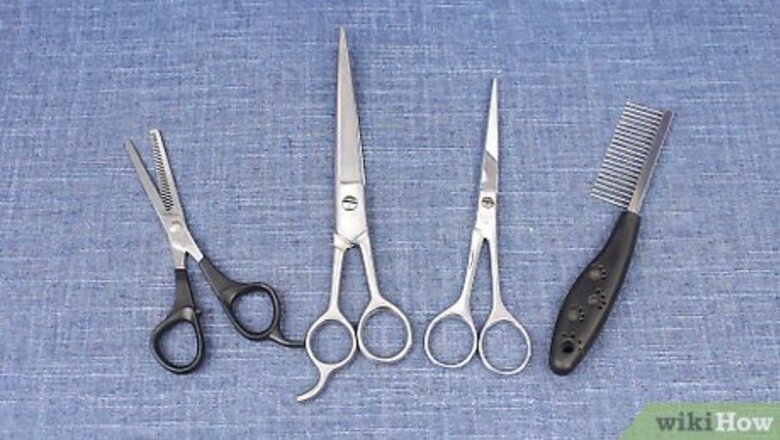
views
Prepping to Groom
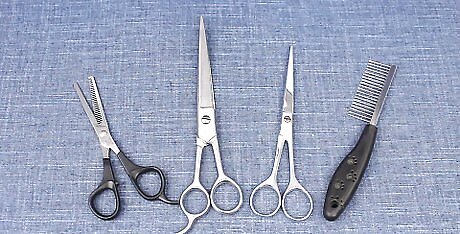
Get a full set of grooming scissors. To trim the hair in a way that is comfortable for your dog and looks right, you’ll need more than a standard pair of scissors. Go to a pet supply store and look for a full set of grooming scissors. Each type has a specific purpose. You’ll need: Straight grooming shears for general cutting Curved scissors for rounding off layers of hair Thinning shears for giving your dog’s coat a natural edge, and for dealing with problem areas Rounded safety tip scissors for trimming delicate areas like the face and tail
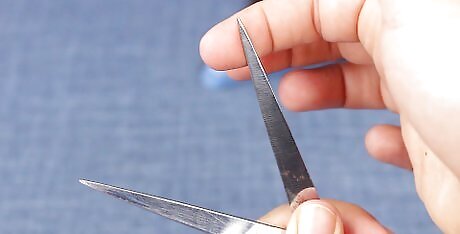
Make sure the scissors are sharp and oiled. Dull scissors will yank on your dog’s hair, causing pain and stress. If your scissors are new, they should be sharp. If the shears have been used several times, however, they may need to be sharpened. Putting a few drops of scissor oil on the blades before you begin will also maintain the shears and make cutting easier. Scissor oil and sharpeners should be available wherever you buy your dog grooming supplies. EXPERT TIP Lancy Woo Lancy Woo Certified Pet Groomer Lancy Woo is a Certified Pet Groomer and the Owner of VIP Grooming, a pet grooming salon based in San Francisco, California. VIP Grooming has served San Francisco for over 35 years. Lancy received her pet grooming certification from the WWPSA (Western Word Pet Supply Association). VIP Grooming has been voted "Best in the Bay" in 2007, 2010, 2011, 2014, 2017, 2018, and 2019 and won Bay Woof’s "Beast of Bay" in 2014. In 2018, Lancy's work contributed to VIP Grooming's acceptance onto San Francisco's Office of Economic and Workforce Development's Legacy Business Registry. Lancy Woo Lancy Woo Certified Pet Groomer Expert Warning: Clean your tools thoroughly every time you trim your dog. To sterilize your scissors, you can spray or wipe them with a household disinfectant, like Lysol or Clorox, or you can dip them into boiling water for 1 minute.
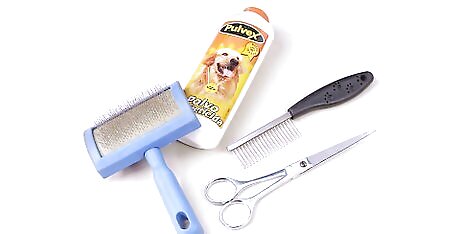
Set up a grooming station. Once the scissors start cutting, hair will fly everywhere. Make clean-up easier by placing a mat underneath your dog to catch most of the flying hair. If you have a small dog, you can even place the mat and dog on top of a table to make grooming easier. When you’re done grooming, just pick the whole mat up and throw the hair away. Make sure your shears, dog brush, and any other grooming supplies you need are easy for you to reach while you work.
Trimming the Dog’s Coat
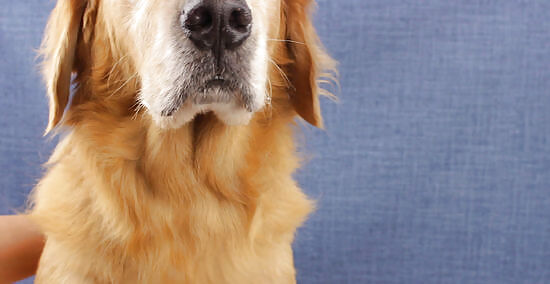
Comb out your dog’s coat. Use a regular dog brush to make sure everything is nice and even. If there are any knots, hold them gently with one hand and place the brush in your other hand. Slowly and gently brush them out to avoid hurting your dog. Many owners prefer to groom their dog right after its bath, since the hair may be easier to work with when it is slightly damp. If the dog's coat is very knotted, trim these out before washing the dog, as water can knit mats together even more.
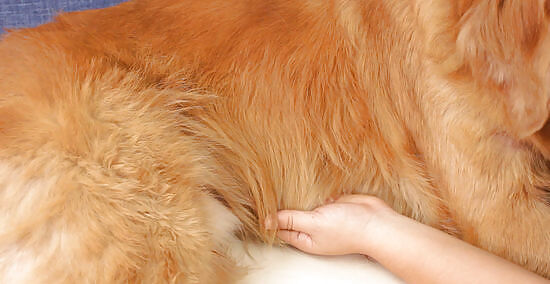
Decide how short you want to cut the fur. If your dog has long hair and you want to keep it long, be sure to trim enough in places that are prone to matting, such as the belly and tail. Beyond that, length is largely a matter of preference. Use your fingers as a guide to make sure that you don’t cut too much off. For instance, you may decide that you want to cut most of your dog’s hair to the length of your finger. Use your finger to measure the length as you cut and keep things consistent. You don’t have to cut all of the hair to the same length. For instance, you might cut the dog’s sides to finger length but the belly to half a finger length.

Cut hair on the dog’s body front to back. Start with the straight shears and begin cutting from the area at the top of the dog’s neck. Slowly and carefully work your way down to the tail area, but don’t cut the tail hair yet. Then go back and trim the hair down the sides of the dog’s belly and legs. If your dog has thick fur that you want to lighten up, you can go back over these areas with the thinning shears a bit to feather the hair into varying lengths. You can also go back over the sides a bit with the curved scissors so that the hair looks more natural instead of all being cut straight across.
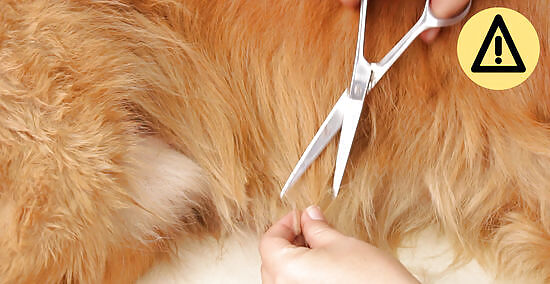
Work slowly and carefully. Injuring your dog is sure to make it afraid of grooming sessions. Take your time! Working carefully also makes it less likely that you will make mistakes when cutting. A couple of basic guidelines will ensure a painless, successful grooming session: Cut only where you can hold up the hair and see through it. That is, if the hair is so thick that you can’t lift it up and see light shining through, you are probably cutting too close to the dog’s skin. It's best to keep a comb between the dog's skin and the scissors, as this will help prevent you from cutting the dog's skin. Use a light touch when cutting with the scissors, instead of chomping the blades down hard and fast. That way, if you accidentally do catch your dog’s skin in the scissors, you’ll probably be able to stop before causing an injury.
Grooming Sensitive Areas
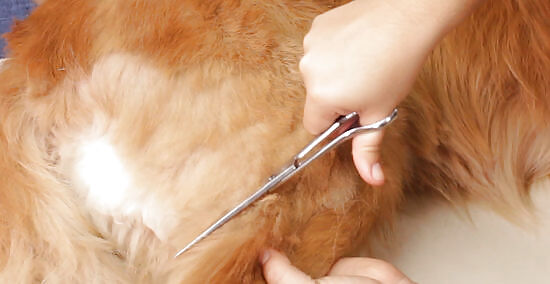
Save sensitive areas for last. Cut the sides and legs before you start on more difficult parts like the face, ears, feet, and tail. That way, you can be sure to get the bulk of the cutting out of the way. If your dog gets skittish at the end and you have to stop, it will at least have been mostly trimmed.
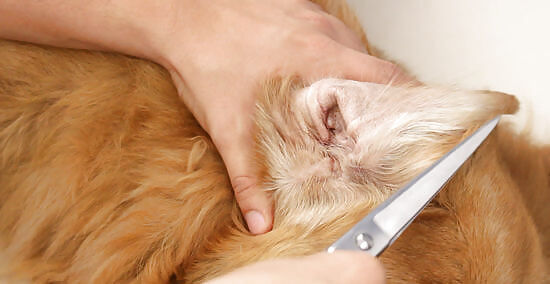
Use extra care around the dog’s face, ears, and tail. When cutting these areas, don’t plan on removing lots of hair. Instead, concentrate on carefully removing any hair that’s getting in the way of the dog’s eyes, and removing excess hair to prevent matting on the ears and tail. Use the rounded tip safety shears when working on these areas.
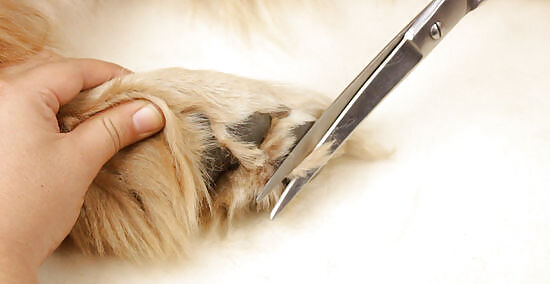
Work back to front when trimming the dog’s feet. Use the rounded tip shears here as well. Trim the feet from the back, near the leg, up toward the toes. This makes it easier to see what you are doing and not cut too much off. Only cut fur that hangs out past the edges of the toes and foot pads--no shorter!
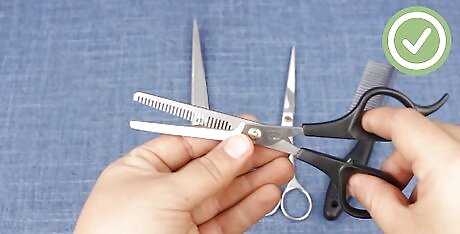
Use the thinning shears to fix any problem areas. If there are any matted areas or patches of thick hair, use the thinning shears to remove these without taking all of the hair away. Varying the length of the dog’s hair will also give its coat a more natural look.


















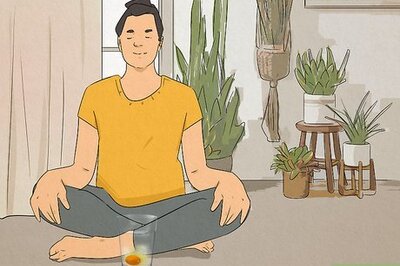
Comments
0 comment